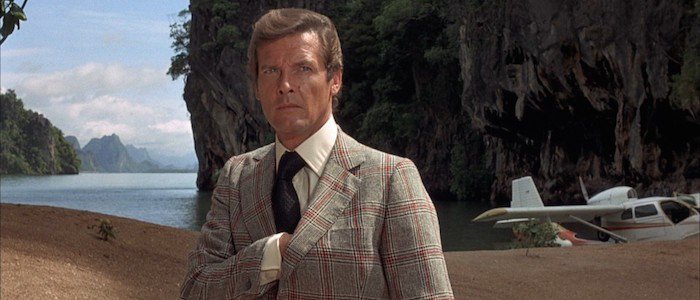
by 007hertzrumble | May 23, 2017 | Blog
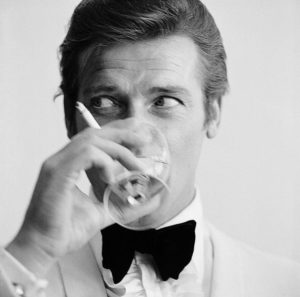 I may have started #Bond_age_, but no man was more important to #Bond_age_ than Roger Moore. He may not have known we existed (maybe he did — one can dream), but he fueled this project from the very earliest weeks of its inception. Today, I’m just one of a million voices paying tribute to Sir Roger Moore (or Party Moore as he was referred to around the #Bond_age_ HQ water cooler). And like many of you, I’m heartbroken to learn that great Roger Moore has passed away at the age of 89 in Switzerland after a short battle with cancer.
I may have started #Bond_age_, but no man was more important to #Bond_age_ than Roger Moore. He may not have known we existed (maybe he did — one can dream), but he fueled this project from the very earliest weeks of its inception. Today, I’m just one of a million voices paying tribute to Sir Roger Moore (or Party Moore as he was referred to around the #Bond_age_ HQ water cooler). And like many of you, I’m heartbroken to learn that great Roger Moore has passed away at the age of 89 in Switzerland after a short battle with cancer.
When I first decided to undertake this project in 2012, I’d just intended to write a weekly blog entry on a small literary magazine website about the James Bond movies. A short time into the planning, I considered the benefits of live tweeting the movies along with the essays. I thought the live tweets would help direct my writing and offer some ideas about the direction of those words. The first live tweets for Dr. No through Goldfinger consisted of me live tweeting Bond facts to one, maybe two other friends of the project. After Goldfinger I wanted to quit the live tweets. I felt like I’d thrown a party and nobody came.
After Goldfinger, I took a holiday break to regroup and recalibrate. I came to a decision. I would continue the live tweets at least through Live and Let Die. If a Roger Moore Bond film couldn’t energize a live tweet, there just wasn’t any reason to do it. I didn’t have to wait that long, however. Starting with Thunderball, our live tweet traffic escalated significantly. And this was good. But it wasn’t until the The Spy Who Loved Me and Moonraker live tweets that #Bond_age_ found its identity through a regular core of fun-loving and snark-filled patrons that recognized the folly but still embraced the joy Roger Moore brought to our screens — not entirely unlike Roger himself — sometimes self-deprecating, always keenly aware of the importance of being an entertainer.
And here we are, almost five years later, still live tweeting James Bond.
By any standard he was a fine actor, but a greater star — oozing charm and charisma from every one of his perfect pores. His appeal, however, transcended James Bond or Simon Templar. Roger Moore welcomed the affection of his fans, never once showing any regret about the time he spent in the tuxedo. He made time for everyone, making regular signing appearances to raise money for his humanitarian efforts, meeting fans, remaining accessible and vibrant through his 80’s, a regular fixture on Twitter.
He embraced the good with the bad and never publicly spoke a negative word about anyone (some veiled ones, perhaps — just read his brilliant autobiographies). Everyone loved Roger Moore because Roger Moore loved everyone. When eulogizing Roger Moore, one cannot overlook his many humanitarian efforts for organizations like UNICEF, Children in Need, Epilepsy Action, and dozens of others too numerous to name here.
But we’re gathered here together as fans, united by our love for a shining personality in a bespoke suit… or an Amazonian safari outfit. Today we mourn, but we also celebrate the man. The quick wit, the hinged eyebrow, the kind heart, the true British gentleman.
Tonight I will raise a glass of bourbon in honor of Roger Moore’s specific and unique contribution to James Bond. To honor a man that has brought all of us so much joy. I hope you will join me and post a picture of your toast on social media. Tag it with #AToastToRogerMoore.
Tomorrow’s #Bond_age_ birthday salute to Pierce Brosnan has been postponed. We’re planning some Roger Moore programming instead.
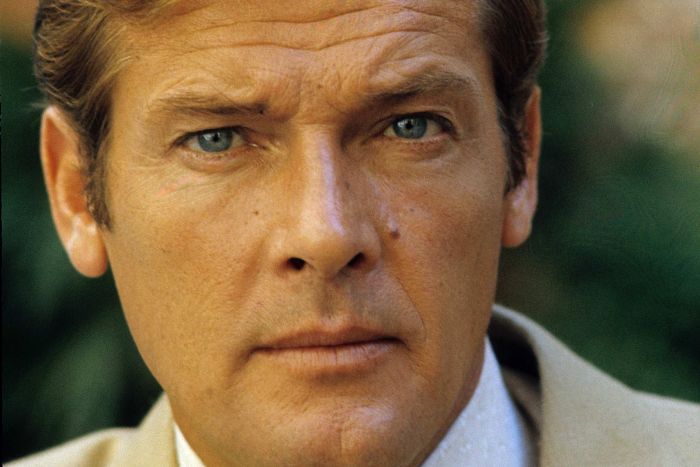
by 007hertzrumble | May 4, 2017 | Blog

Bond 25 News and Rumblings: Christopher Nolan’s Syncopy to Produce?
We’ve waited months for any shred of information about the next entry in the Bond series, and this week we’ve been hit with a cold, dead WTF fish. A WTF fish wakes us from our stupor. Initially the impact feels refreshing. News! News! And then once the thrilling sting dissipates, the curious stench of the cold, dead partially decomposed WTF fish remains.
The news broke this week via the @Bond25 twitter account that IMDb had listed “Bond 25” under the “In development” projects at Syncopy, Christopher Nolan’s production company. After the Interwebs verified this news with IMDb, they jumped to the conclusion that Nolan had been slated to direct the next Bond film. Let’s not plan on James Bond carrying any shark-repellant Bat Spray in his attache case just yet.

Christopher Nolan contemplates the ways in which he can make Batman and James Bond the same character once and for all.
Just because Nolan’s a talented director doesn’t make him fit to direct a Bond film. He’s admitted he crafted his Batman after James Bond, but Bond demands a lighter touch and a measure or tease of sexuality along with these routine action beats. This is not Christopher Nolan territory. And quite frankly that wasn’t Sam Mendes territory either. Phil Nobile, Jr. threatened to break out Le Chiffre’s testicle whip on anyone that suggested another “name” director for James Bond, and I’m firmly on board with this proposition. Considering Eon’s history as an isolated creative entity, Syncopy’s collaboration seems patently absurd. It also doesn’t mean Nolan will direct; it’s more likely that Eon (helmed by Barbara Broccoli and Michael G. Wilson) has merely shed some production duties onto Syncopy. There’s likely a legitimate business-related reason for this coupling.

Bond 25’s Distribution Deal Not Yet Done
Nolan and Syncopy’s involvement in Bond 25 makes more sense when paired with a few other interesting developments. First, the distribution rights for the film remain up in the air. Family-held Eon and MGM control the fate of the franchise but do not distribute the films. Sony Pictures Entertainment has released all of the Craig-era Bond movies, but their contract expired after Spectre. Five studios, including Sony, have made their best pitch to land the rights to distribute James Bond. The others are Warner Bros., Universal, 20th Century Fox, and the little upstart that could, Annapurna. Though Eon retains almost complete creative control, the distributing studio — as the Daddy Warbucks of this operation — will have some creative input. The selection or approval of a director, perhaps.
Bond 25 Scores a Director?

WICKER PARK, Paul McGuigan, 2004, (c) MGM
Rumors broke this week that Eon has been meeting with potential Bond 25 directors and the name Paul McGuigan sits high on their list. McGuigan has a curious big-sceen resume consisting of Wicker Park, Gangster No. 1, Lucky Number Slevin and Victor Frankenstein. Let’s not dwell on the latter two titles for long as they only serve to further dampen potential enthusiasm. McGuigan has shown more consistent talent on the small screen, having directed the Sherlock pilot for the BBC and two episodes of Luke Cage. More importantly McGuigan helmed Eon Productions’ upcoming release Film Stars Don’t Die In Liverpool, which puts his foot firmly in the door to Babs’ office.
McGuigan’s precisely the kind of director that has excelled in the Bond universe. Short on tentpoles, long on small successes, adept at ego-less shepherding rather than innovating. See Martin Campbell, John Glen, Lewis Gilbert. If there’s a specific creative direction that would most benefit Bond in 2017 and beyond, it’s a step back from Batman and a step closer to Sherlock Holmes. Therefore, If Eon hopes to sell McGuigan to a potential distribution partner, Christopher Nolan and Syncopy become the insurance policy on their undervalued commodity.

Rachel Tallalay talks Dr. Who.
Another name I heard mentioned in idle chatter is Rachel Tallalay. The Tank Girl director helmed an excellent episode of Sherlock (“The Six Thatchers”) and boasts Dr. Who, The Flash and Supergirl credits. I normally leave such musings on the message boards, but selecting a clearly qualified female director for a James Bond film would create immediate and generous buzz for the already high-profile project.
Sidenote: Here’s a crazy idea. And I’m just spitballing here… but let’s call Martin Campbell. Just to see what if he can fit Bond in around his fishing schedule.
It’s no secret that Christopher Nolan has long coveted a share of the Bond franchise. Syncopy’s willing involvement should probably come as no surprise, yet Eon’s eagerness to share their property most certainly does. Immediately I thought that Michael G. Wilson was finally taking a step back from his duties to focus on new and inventive Bond-movie cameos. The 75-year-old producer had mentioned ceding more control to Barbara, and maybe Barbara was in turn trying to find a partner to assist her now and in the near future.

Will Craigers return for Bond 25?
This all comes, of course, in the void of any definitive word about the face of the franchise, Daniel Craig. I’ve been saying this since the release of Spectre: I think Craig will come back for one more film. We’ll never know what’s actually on Craig’s mind because he loves lobbing holy hand grenades of misdirection during interviews. If he hasn’t yet made up his mind, we should also consider that any one (or all) of these behind-the-scenes machinations aim to keep Craigers in a tuxedo for a fitting final entry in the Daniel Craig-era. If he isn’t returning, well… let’s brace ourselves for the impact of yet another WTF fish in the near future.

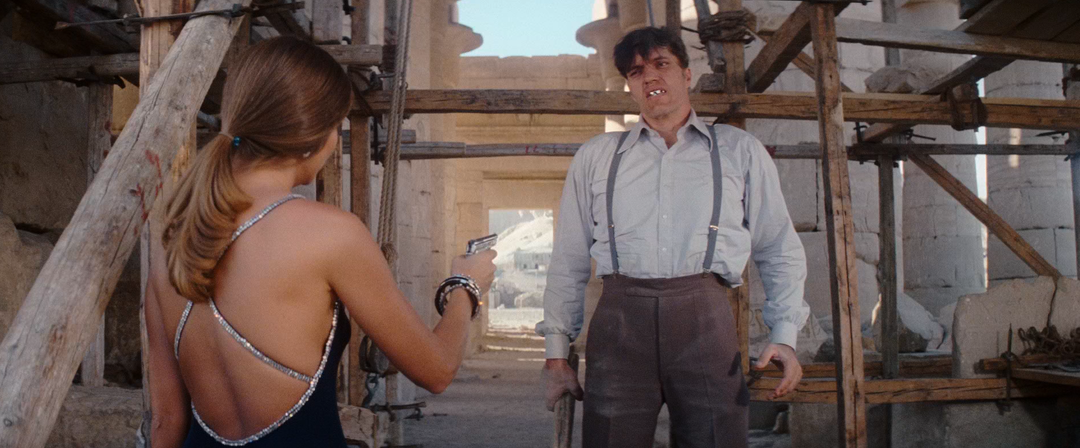
by 007hertzrumble | Apr 24, 2017 | Blog
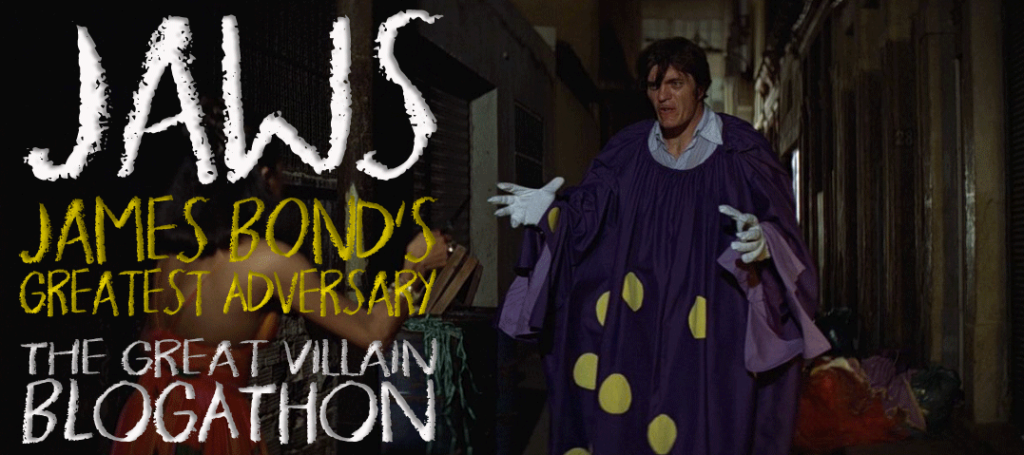
Midway through Moonraker, James Bond (Roger Moore) and Dr. Holly Goodhead (Lois Chiles) board a tram to take them to the bottom of Sugar Loaf Mountain in Rio de Janeiro. A certain towering and infamous henchman disrupts their journey by jamming the tram’s gears in the engine room. When James Bond climbs out of the tram to get a better view, the henchman bites through the cable with his steel-belted teeth and boards another tram heading towards our stalled hero.
“I might have guessed,” Bond says.
Goodhead responds, “Do you know him?”
“Not socially. His name’s Jaws. He kills people.”
In another moment, Jaws appears opposite Bond on the other tram car. The two exchange knowing smiles before engaging in high-wire fisticuffs over the Guanabra Bay.

Bond’s line “His name’s Jaws. He kills people.” serves as a perfect introduction for 007’s most formidable and only repeat non-Blofeld adversary. After all, this is also all the audience knows about Jaws as well. No backstory. No circuitous ties to Bond’s past. Only murder and the relentless pursuit of James Bond. He’s succeeded in dispatching all of his targets (Bond excepted, of course), often brutally. In The Spy Who Loved Me he quite literally bit a man to death.
Audiences love to hate a great villain. From these conflicted emotions emerges a conundrum. The audience secretly hopes that neither our hero nor our villain will ever truly be beaten. We come to love the pursuit more than the hope or expectation of victory.
Jaws, an Origin Story
James Bond has always fought a colorful cast of villains. While the smooth and sophisticated British agent of espionage remains the face of the franchise, the Bond movies have always relied heavily on the creative guile and menace of Bond’s adversaries. A great James Bond film must have great villains.
Goldfinger (1964) has long been a series benchmark, but look at the film more closely. James Bond makes a series of unfortunate decisions that lead to his repeated capture and exploitation. He’s not even directly responsible for saving the day — that job fell to Pussy Galore. But we gloss over Bond’s failures and the film’s narrative vagaries because Goldfinger boasts the series’ most iconic pair of baddies in Auric Goldfinger and his henchman, the hat-tossing Oddjob. It’s James Bond’s cat and mouse game between these two villains that makes the film an essential. Also, Pussy Galore. But we’re here to talk about specific villainy, not about single entendres.
To trace the roots of Jaws (played by the late Richard Kiel), one must start with that imposing Korean (Japanese wrestler Harold Sakata). Aside from his skill at tossing a metal-rimmed bowler hat, Oddjob also proves to be an unstoppable physical presence. When he and Bond do battle in the Fort Knox finale, Oddjob throws Bond around like a rag doll. Bond tosses a gold brick that bounces off the henchman’s chest like Styrofoam. A block of wood to his face results only in a wry smile. It’s clear that Bond cannot best Oddjob physically. Bond instead defeats Oddjob by testing the brute’s knowledge of electrical resistivity and conductivity.

Spoiler alert: Oddjob skipped that week in AP Physics.
The kind of cartoonish superhuman physical prowess displayed by Oddjob would not return to the Bond series until 1977’s The Spy Who Loved Me, the debut of Jaws as Karl Stomberg’s hired assassin. Jaws showcases the same immunity to physical pain, the same brand of insurmountable strength displayed by Oddjob in Goldfinger. Like Oddjob, Jaws also does not speak – at least until the very end of Moonraker, but we’ll return to that in a moment. Jaws also one-ups Oddjob in the iconic prop department. Instead of an aerodynamic bowler hat, Jaws comes pre-packaged with steel teeth. Less old-timey class, more immediate medieval menace.

The Value of Henching
“Every good villain has a good henchman, of course. The most memorable of all has to be Jaws, as played by my good friend Richard Kiel.” Roger Moore, My Word is My Bond
In the Bond universe, the main villains, as the brains of the operation, employ henchmen to do their dirty work. While they scheme and manipulate from remote, secluded lairs and fortresses safely removed from confrontation, the hired henchmen confront Bond on the frontlines. Bond henchmen come in all packages, from the 3’10” Nick Nack (Herve Villachaize in The Man with the Golden Gun) to the 7’2″ Jaws, from voodoo loa Baron Samedi (Geoffrey Holder in Live and Let Die) to the erotophonophliac Xenia Onatopp (Famke Janssen in GoldenEye).

Just an excuse to post a picture of Famke Janssen in GoldenEye. (1995).
In general, Bond villains are maniacal erudites with aim of inciting global chaos. While the broad modus operandi of the primary villain rarely wavers, their henchmen take on varying degrees of creative eccentricity. In only a few of instances during the series’ half-century run, has the villain overshadowed his caricatural henchmen — especially during Roger Moore’s tenure as James Bond, when producers became increasingly more inventive, freed from the creative restrictions of Ian Fleming’s original texts. There’s nothing inherently entertaining about rote hyper-intellectualism (Moonraker‘s Drax proves to be the most notable exception); therefore, the henchmen, as the front line of defense against James Bond, become the means by which the series innovates villainy.
Bond must overcome both intellectual and physical obstacles. The henchmen function not only as an immediate menace and physical threat to 007, but also the ways by which the series differentiates between base coat primary villains in the traditional Bond formula. Case in point: if someone asks you to rank your 10 Favorite Bond villains, how many on your list are primary villains and how many are henchmen?
Jaws’ Popularity Paradox
Jaws proved to be so big and so bad that Cubby Broccoli rewrote the end of The Spy Who Loved Me to allow Jaws to return in a future entry. Originally, Richard Kiel’s 7’ 2” Jaws was to have drowned at the end of that film; instead Jaws pops up from the ocean, untarnished, and keeps swimming. Roger Moore remembers vividly that the audience at the premiere of The Spy Who Loved Me cheered when Jaws rose up from the water. He said, “That raised a round of applause… especially from the youngsters.”

Jaws (Richard Kiel) confronts Agent XXX (Barbara Bach) in The Spy Who Loved Me.
Obviously, nobody in the audience would have wished for the demise of James Bond, but the notion that this spectacular adversary would live to fight Bond another day excited moviegoers. He had been Bond’s combative equal. Though Bond had won the day, he could not best Jaws. Due to Cubby’s tremendous foresight regarding Jaws’ potential popularity, The Spy Who Loved Me provided the opportunity for a return trip, but it also created a logistical problem for the James Bond creative team.
Jaws could not become a permanent fixture, yet The Spy Who Loved Me and the first half of Moonraker had suggested Bond could never ultimately defeat him. (He fell 10,000 feet into a circus tent and walked away!) They also didn’t want Jaws to meet his demise at the hands of Bond. The “youngsters” would certainly be disappointed. As a result, Moonraker employs an infamous shift in character — Jaws not only turns against Drax, his boss, in order to help James Bond but he does so for the love of a bespectacled girl in pigtails. For the record: she doesn’t have braces.
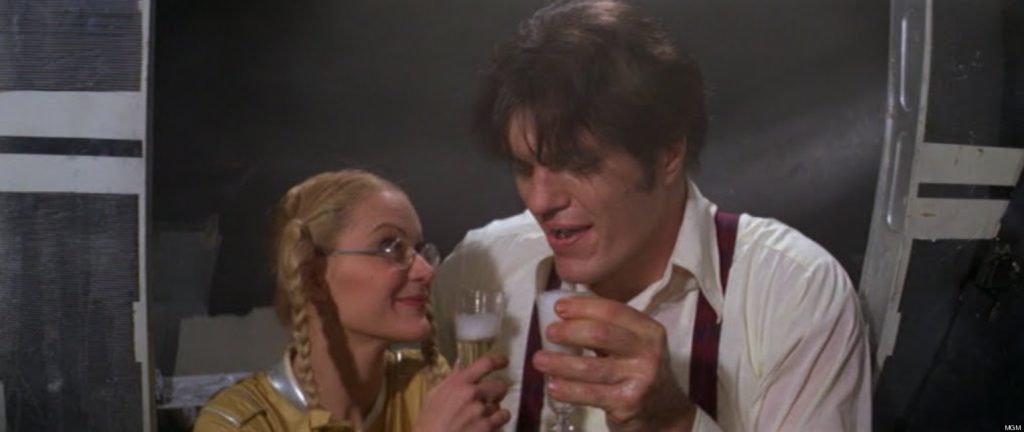
For many Bond fans, this 180-degree shift in character from indomitable villain — to gooey love muffin became an unforgivable offense. Undermining the character of Jaws in this manner was like making Darth Vader retire from the Empire in order to join the ASPCA. When audiences cheered for Jaws’ survival, they could not have imagined this particular outcome. Most Bond fans ameliorate this disappointment by treating the Jaws of The Spy Who Loved Me and the Jaws of Moonraker as two different characters. How else can one assimilate unconscionable evildoing and towering slapstick clowning into the same character?
Jaws Lives On
For better and worse, the Bond franchise has been a slave to popular opinion since its rise to blockbuster status. Moonraker stands as a testament to the dark underbelly of writing and creating cinema based purely on anticipated audience demand. Bond producers wanted to capitalize on the Star Wars phenomenon. Hence Bond in space. Likewise, Bringing Jaws back in Moonraker strictly for the fans, rather than letting him swim off into the sunset, created a no-win scenario. Unless you discuss Jaws with the children of 1979.
Criticizing Moonraker or Moonraker‘s rebranding of Jaws perpetuates a prosaic argument. Accepting the film as an exercise in testing the outer boundaries of the Bond formula, however, becomes rather liberating. The murderous henchman named Jaws remained in the world of The Spy Who Loved Me — the baddie that carries out executions without remorse, the towering, immovable mass of humanity that easily could have been the end of James Bond. But as we well know that’s not quite the end of the Jaws story.
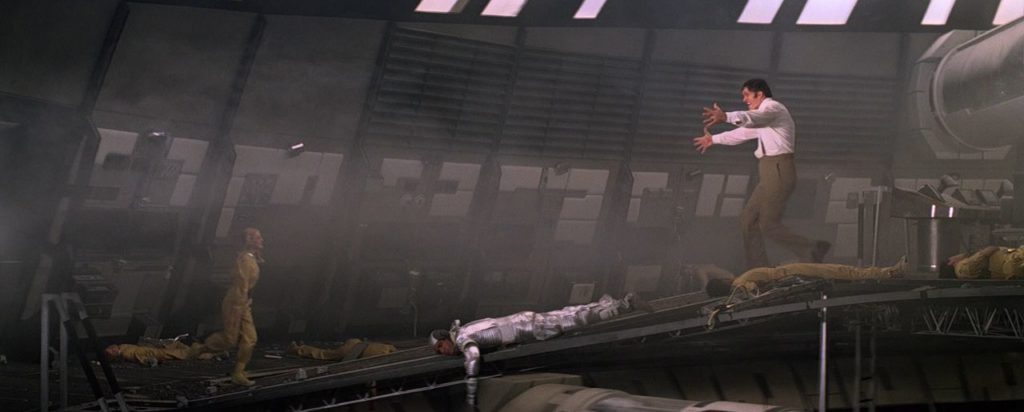
One of the most certifiably bonkers moments in all of James Bond. The murderous giant rushes to embrace the love of his life.
Jaws utters his one sentence at the end of Moonraker. When he says to his new girlfriend, “Well, here’s to us,” we’ve witnessed the complete dismantling of James Bond’s indomitable foe. James Bond would certainly approve that Jaws had given up the chase for a girl. However false this outcome feels to the objective viewer, it falls in line with the Moonraker carnival of absurdities.
Moonraker was made, in part, for those kids that cheered Jaws’ survival. While it’s easy to dismiss the value of such absurd escapism, it’s much harder as a cynical adult to embrace the wide-eyed optimism where anything becomes possible — where a beloved but murderous assassin falls in love, gets the girl and helps Bond saves the day. As a result, Jaws accepted a certain duality that made him both terrible and lovable. Richard Kiel’s character endures now more viscerally because Jaws has become both classic villain and lasting childhood nostalgia.


 I may have started #Bond_age_, but no man was more important to #Bond_age_ than Roger Moore. He may not have known we existed (maybe he did — one can dream), but he fueled this project from the very earliest weeks of its inception. Today, I’m just one of a million voices paying tribute to Sir Roger Moore (or Party Moore as he was referred to around the #Bond_age_ HQ water cooler). And like many of you, I’m heartbroken to learn that great Roger Moore has passed away at the age of 89 in Switzerland after a short battle with cancer.
I may have started #Bond_age_, but no man was more important to #Bond_age_ than Roger Moore. He may not have known we existed (maybe he did — one can dream), but he fueled this project from the very earliest weeks of its inception. Today, I’m just one of a million voices paying tribute to Sir Roger Moore (or Party Moore as he was referred to around the #Bond_age_ HQ water cooler). And like many of you, I’m heartbroken to learn that great Roger Moore has passed away at the age of 89 in Switzerland after a short battle with cancer.


















